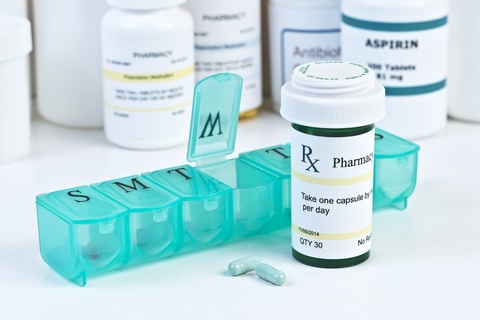
Santa Fe is known for its art, architecture — and clean air. Photo from Tourism Santa Fe
Until I heard from Erin Lowry, a blogger for 1stClassMedical.com, I didn’t realize that chronic obstructive pulmonary disease (COPD) is the third largest cause of illness-related death in the United States after heart disease and cancer
As Erin points out, “COPD is a broad term for a group of diseases affecting the airways and lungs,” with chronic bronchitis and emphysema being the two most common types.
While the main cause is long-term exposure to cigarette smoke, Erin says “it’s also possible to get COPD from air pollution, chemicals and even dust. Outside toxins can worsen the effects of COPD, making it hard for COPD patients to go outside without having a flare up.”
And she adds that while there is no current cure for COPD, since damage to the airways and lungs is permanent, “there are medications that can lessen the severity of inflammation and pain in the lungs.”
Since baby boomers are among the main sufferers from COPD, I asked Erin about the implications for travel for those with the condition. Here is what she wrote:
By Erin Lowry
Travel can be challenging for people with chronic obstructive pulmonary disease (COPD).
Along with your usual luggage, you have to worry about having everything you need for your medications and oxygen supply.
You also have to be concerned with the temperature, altitude and air pollutants at your destination.
But don’t give up on your dreams of traveling! We’ve pulled together some ways to make the journey easier for those with COPD.
Let’s start with a few locations in the U.S. that we recommend visiting, as well as some that the American Lung Association (ALA) finds to be heavily polluted.

Honolulu’s world-famous Waikiki is a good place to travel if you have COPD.
Top 3 U.S. Locations to Visit:
- Santa Fe, New Mexico
- Honolulu, Hawaii
- Asheville, North Carolina
The American Lung Association (ALA) deemed Santa Fe one of only 20 U.S. cities having a consistently safe ozone level.
The ALA also gave Santa Fe high accords in its State of the Air report, giving Santa Fe a low smog and pollution level.
Not only is Santa Fe’s air low in pollutants, it also has almost 300 sunny days a year. The city is also a center of Southwest culture and history.
Honolulu is great to visit due to its clear air and low particulates (irritants that can cause harm to the lungs).
Being thousands of miles from the mainland, Hawaii is far away from pollutants and other particles that can be irritants for those with COPD.
The weather there is ideal and it features fascinating Pacific-Asia culture, beautiful ocean views, and tropical breezes.
Asheville is another prime destination for those with COPD. EPA AirNow currently reports the air quality as 34/500, which is good, minimally polluted air.
Along with good air quality, Asheville and the surrounding region is known for its historical attractions and its abundance of indoor art galleries and museums.
Worst 3 U.S. Locations to Visit:
- California
- Pittsburgh, Pennsylvania
- Louisville, Kentucky
We couldn’t single out a specific city in California, since the top 7 of the ALA’s most polluted areas (in 2016) are all in that state.

The Biltmore Estate is one of Asheville’s top attractions, along with its fresh air.
Bakersfield, Visalia-Porterville-Hanford, LA-Long Beach, El Centro, Modesto, Merced, San Jose, San Francisco and Oakland are all on the list.
When traveling to these areas, expect that you’ll encounter the highest number of irritants. Make sure you take all medications and plan more indoor activities.
Pittsburgh tied with New Castle, OH, and Weirton, WV, for next worst on the list. The ALA ranked Pittsburgh negatively on its State of the Air report from 2014 to 2016.
Since closing power plants in the past few years, the daily measure of fine particles (PM) pollution has begun to decrease, and Pittsburgh is trying to ease its footprint on the environment by lessening pollutants and testing vehicle emissions.
Louisville is the other major city ranked highest for its pollution levels, fueled in large part by coal-powered power plants. Located in a valley, Louisville’s polluted air blankets the city in summer without any breeze to disperse it.
Though the city recognizes the impact pollutants have on its air quality, levels have only improved by about 15 percent since 1999, less than one percent a year.
How to Visit the Worst Locations Anyway:
The good news is that just because a destination may be deemed a “worst” location, it doesn’t mean you can’t visit there at all.
As long as you are prepared, you can visit anywhere you want — no matter the altitude, temperature or air pollutants.
If you want to visit a high altitude location, such as Denver, CO, you just need to plan accordingly.

Giving yourself a couple of extra days to acclimate to the altitude before you perform any activities can save you from altitude sickness or difficulty breathing.
The weather — whether it’s too hot and humid or too cold and crisp — can also affect your COPD.
Plan as many indoor activities — such as museums and art galleries — as possible.
If you are too excited about nature to stay indoors, plan short outdoor activities, with rests in between. Spending some time inside gives your body time to cool off before you go back outside for another adventure.
What You Need on Your Trip:
Before you take off on your vacation, here are some items you’ll want to bring with you.
Carrying your medications (in the prescription bottles they came in), any form of oxygen (tank or concentrator), the right number of batteries for your machine, and hard copies of your prescriptions can help make going through security a breeze.
Also make sure you have enough medications to last the length of the trip — and a few extra pills after that, in case any get lost.
Having your medications in original prescription bottles will ease your way through security.
It also helps to list all your prescriptions in hard copy form, in the event you need to see a doctor while you are on vacation. You may want to research or get recommendations for local doctors at your destination so you’ll be prepared.
Contacting all your travel providers — such as airlines, hotels, and cruise lines — can also help smooth your trip by warding off unexpected surprises.
You will learn what your airline requires for oxygen battery life, if your hotel has low-allergen rooms, or if your cruise needs a note from your doctor to clear you for travel.
Be sure to pack appropriately for the weather at your destination: extra clothing for cold temperatures and light flowing clothes for hot.
Packing for 95-degree weather is a lot different than packing for 40 degrees, but sometimes you’ll encounter both. If that’s the case, plan to bring a “shield” for your mouth. A scarf can help cover your mouth and nose, protecting it from air pollutants in hot weather and staving off harsh air in cold weather.
In fact, a scarf or another small article of cloth (such as a handkerchief) can make travel more comfortable no matter what your destination is.
Don’t be deterred by COPD
Though your COPD can limit your travel, these tips and tricks will help you prepare for your vacation and allow you to better enjoy your trip.
Remember to speak with your doctor, travel providers and hotel destinations.
Make sure to also contact any activity locations planned for the day, including museums, restaurants and outdoor activities.
The important thing is not to let your disease restrict you from traveling the world — just make sure to plan according to the location, climate and altitude.
You can read more of Erin’s writings about coping with COPD at 1st Class Medical.
Note: For excellent information on traveling with portable oxygen by plane, car, train, or cruise ship, check out Inogen’s five-page Resource Guide to Traveling with Oxygen here.












5 Responses to You Can Travel With COPD: Here’s How